The Role of AI in Detecting Smart Contract Vulnerabilities Before Deployment
AI helps detect smart contract vulnerabilities before deployment through audits, monitoring, and secure code suggestions.

In the rapidly evolving world of blockchain technology, smart contracts have emerged as the backbone of decentralized applications, enabling trustless and automated transactions through self-executing smart contract code. Platforms like Ethereum, Solana, and Binance Smart Chain rely heavily on these digital agreements, but their immutability makes them highly susceptible to security flaws. From reentrancy attacks to access control issues, vulnerabilities in smart contracts have led to multimillion-dollar exploits, underscoring the urgent need for robust vulnerability detection.
Enter Artificial Intelligence (AI), a transformative force in blockchain security. By leveraging machine learning and advanced analytics, AI can identify hidden threats in smart contract code, automate audits, and even assign predictive risk scores. Whether through static analysis, dynamic simulations, or natural language processing, AI is redefining how developers secure smart contracts. Vulnerability detection in decentralised development workflows is no longer optional; it’s essential.
Why Smart Contracts Are Vulnerable
Smart contracts are a cornerstone of blockchain technology, enabling decentralized applications to execute predefined rules without intermediaries. Once deployed on a blockchain platform such as Ethereum, Solana, or Binance Smart Chain, smart contracts become immutable, meaning any bugs, logic errors, or smart contract vulnerabilities are permanently embedded unless developers have implemented a migration or upgrade mechanism. This immutability, while enhancing trustlessness, also amplifies the consequences of flawed smart contract code.
Several types of vulnerabilities have plagued smart contracts over the years:
- Reentrancy Attacks: A malicious contract exploits a vulnerable function by repeatedly calling it before the initial execution completes, as seen in the infamous DAO hack.
- Integer Overflows/Underflows: Arithmetic operations that exceed or fall below variable limits can corrupt logic and lead to fund mismanagement.
- Unchecked External Calls: Failing to verify the success of external contract interactions can result in unintended behaviour or asset loss.
- Access Control Issues: Missing or misconfigured permission checks allow unauthorized users to execute sensitive functions.
- Front-Running: Exploiting transaction ordering for profit, often by miners or bots, undermines fairness in decentralized finance.
Traditional security measures, such as manual audits and static analysis tools like Slither, MythX, and Oyente, have been instrumental in identifying these flaws. However, the complexity and scale of modern smart contracts demand more advanced solutions. This is where artificial intelligence systems come into play.
AI-driven approaches, particularly those powered by neural networks, are revolutionizing vulnerability detection in smart contracts. These models can analyze vast amounts of smart contract code to identify patterns and anomalies that may indicate potential exploits. Among the most promising techniques is the use of graph neural networks, which model the relationships between contract components to uncover hidden vulnerabilities that traditional linear analysis might miss.
By integrating artificial tools into the development lifecycle, developers can proactively detect and mitigate smart contract vulnerabilities before deployment. As blockchain ecosystems continue to grow, the fusion of AI and blockchain technology will be essential for building secure, scalable, and trustworthy decentralized applications.
How AI Improves Smart Contract Security
As smart contracts become increasingly central to decentralized finance and blockchain applications, ensuring their security is paramount. Artificial Intelligence (AI) is emerging as a transformative force in this space, offering advanced techniques to detect, analyze, and mitigate vulnerabilities in smart contract code. By leveraging machine learning, deep learning, and natural language processing (NLP), AI enhances both the speed and accuracy of smart contract audits, reducing the risk of costly exploits.
1. Machine Learning for Pattern Recognition
AI models powered by machine learning are particularly adept at identifying patterns and anomalies in smart contract code. These models can process vast amounts of bytecode or source code written in languages such as Solidity and Vyper, learning from historical data to enhance their predictions.
- Supervised Learning: In this approach, AI systems are trained on labelled datasets containing examples of both secure and vulnerable smart contracts. By learning the characteristics of past exploits, such as reentrancy attacks or access control issues, AI can classify new contracts as safe or risky with increasing precision.
- Unsupervised Learning: Unlike supervised models, unsupervised learning algorithms do not rely on labelled data. Instead, they analyze the structure and behavior of smart contract code to detect unusual patterns or anomalies that may indicate novel or previously unseen attack vectors. This is especially useful for identifying emerging threats in the rapidly evolving landscape of blockchain technology.
These machine learning techniques are often enhanced by graph neural networks, which model the relationships between different components of a smart contract. By understanding how functions and variables interact, graph neural networks can uncover complex vulnerabilities that traditional linear analysis might miss.
2. Automated Static and Dynamic Analysis
AI significantly improves both static and dynamic analysis of smart contracts, making the auditing process more thorough and efficient.
- Static Analysis: This involves scanning smart contract code without executing it. AI algorithms can flag suspicious patterns such as unsafe delegate calls, unguarded state changes, or improper access controls. Static analysis is particularly effective for catching common coding errors and known vulnerability signatures before deployment.
- Dynamic Analysis: In contrast, dynamic analysis simulates the execution of smart contracts under various conditions. AI models can mimic real-world interactions, stress-test contract logic, and observe how the contract behaves in edge cases. This helps uncover hidden flaws that only emerge during runtime, such as race conditions or unexpected reentrancy loops.
Together, these techniques provide a comprehensive view of a contract’s security posture, allowing developers to address issues proactively.
3. Natural Language Processing (NLP) for Audit Reports
AI-powered tools equipped with natural language processing capabilities can analyze textual data related to smart contracts, including audit reports, whitepapers, and developer documentation. By comparing the intended logic described in these documents with the actual implementation in the code, NLP models can identify discrepancies that might lead to security vulnerabilities.
For example, if a whitepaper claims that a contract includes multi-signature authorization but the code lacks such a mechanism, AI can flag this inconsistency for further review. This ensures that smart contracts not only function correctly but also align with their stated objectives and promises.
4. Predictive Risk Scoring
One of the most impactful contributions of AI to smart contract security is the ability to assign predictive risk scores. By analyzing historical exploit data, code complexity, and known vulnerability patterns, AI models can quantify the risk associated with a given smart contract.
These scores help developers and auditors prioritize which contracts or functions require immediate attention. They also assist investors and users in evaluating the safety of blockchain projects before engaging with them. Over time, predictive scoring systems can evolve to incorporate real-time data, offering dynamic assessments as contracts interact with the blockchain ecosystem.
By integrating AI into the smart contract development lifecycle, teams can dramatically reduce the likelihood of deploying vulnerable code. As blockchain platforms continue to scale and diversify, the role of AI in securing decentralized applications will only grow more critical.
Leading AI-Powered Smart Contract Security Tools
Several cutting-edge projects are harnessing the power of artificial intelligence to enhance vulnerability detection in blockchain and smart contract ecosystems. These tools aim to improve security, automate analysis, and reduce human error in identifying potential exploits:
1. MythX
MythX is a comprehensive security analysis platform designed specifically for Ethereum smart contracts. It integrates AI techniques with symbolic execution, taint analysis, and control flow checking to uncover vulnerabilities such as reentrancy, integer overflows, and access control issues. By simulating various execution paths, MythX can detect subtle bugs that traditional testing methods might miss.
2. Slither
Slither is a static analysis framework developed for Solidity smart contracts. While its core functionality revolves around code inspection and vulnerability detection, it also supports machine learning extensions that can be trained to recognize patterns associated with insecure coding practices. Slither provides detailed reports and integrates easily with CI/CD pipelines, making it a valuable tool for developers aiming to catch flaws early in the development cycle.
3. Securify
Securify, developed by researchers at ETH Zurich, leverages deep learning and formal methods to analyze smart contract security properties. It automatically checks contracts against a set of predefined compliance and violation patterns, offering insights into potential risks. Its AI-driven approach allows it to scale across large codebases and adapt to evolving threat models in decentralized applications.
4. CertiK’s AI Auditing
CertiK combines formal verification techniques with artificial intelligence to deliver high-assurance audits of smart contracts and blockchain protocols. Its AI auditing engine can identify complex vulnerabilities by modeling contract behavior mathematically and comparing it against known exploit scenarios. CertiK’s platform also includes real-time threat monitoring and on-chain analytics, providing continuous protection beyond the initial audit.
5. OpenZeppelin Defender
OpenZeppelin Defender is a security operations platform for Ethereum applications that uses AI to monitor smart contracts after deployment. It tracks on-chain activity, flags suspicious transactions, and automates incident response workflows. By integrating with alerting systems and governance tools, Defender enables teams to maintain contract integrity and respond promptly to potential threats.
These AI-powered tools are transforming the way developers and auditors approach blockchain security, making it more proactive, scalable, and intelligent.
Challenges and Limitations
While artificial intelligence has proven to be a powerful tool in the realm of cybersecurity and vulnerability detection, it is not without its limitations. These challenges highlight the importance of combining AI with human expertise and continuous refinement:
1. False Positives and False Negatives
AI systems, especially those trained on limited or biased datasets, can sometimes misclassify code behavior. This means they might flag harmless or well-written code as potentially dangerous (false positives), leading to unnecessary alarm and wasted developer time. Conversely, they may fail to detect genuinely malicious or cleverly disguised exploits (false negatives), allowing vulnerabilities to slip through undetected. These inaccuracies can undermine trust in automated tools and require manual review to validate findings.
2. Evolving Attack Vectors
Cyber threats are constantly evolving, with attackers developing new techniques, tools, and strategies to bypass existing defenses. AI models trained on historical data may struggle to recognize novel or zero-day exploits that don’t resemble previously known patterns. To remain effective, these models must be continuously updated and retrained with new data, which can be a resource-intensive and time-consuming process. Without regular updates, AI systems risk becoming obsolete in the face of emerging threats.
3. Black-Box Nature of AI Models
Many advanced AI systems, particularly those based on deep learning, operate as “black boxes”—they produce results without offering clear explanations for their decisions. This lack of transparency can be problematic in security contexts, where understanding the rationale behind a flagged vulnerability is essential for effective remediation and building trust. Developers and auditors may struggle to understand why a specific piece of code was flagged as risky, which makes it more challenging to verify or act on the AI’s findings. Efforts to improve explainability and interpretability in AI are ongoing, but remain a significant challenge.
These limitations underscore the need for a balanced approach, leveraging AI for its speed and scalability, while ensuring that human oversight, continuous learning, and transparency are integral to the equation.
The Future of AI in Smart Contract Security
As blockchain technology continues to evolve, the security of smart contracts becomes increasingly critical. Artificial Intelligence (AI) is poised to revolutionize this space by introducing intelligent, scalable, and adaptive solutions. Below are four key innovations shaping the future of AI in smart contract security:
1. Hybrid AI-Human Audits
Definition: A synergistic approach that combines the speed and scalability of AI with the nuanced judgment of human experts. Expanded Insight:
- AI tools rapidly scan smart contracts for known vulnerabilities, logic flaws, and suspicious patterns using machine learning models trained on historical exploit data.
- Human auditors then perform deep manual reviews, interpreting complex logic and edge cases that AI might miss.
- This hybrid model reduces audit time while increasing accuracy, making it ideal for high-stakes DeFi protocols and enterprise-grade blockchain applications.
2. On-Chain AI Monitors
Definition: Autonomous AI agents embedded within blockchain ecosystems to monitor smart contracts in real time. Expanded Insight:
- These monitors continuously analyze transaction flows, gas usage anomalies, and contract interactions to detect potential exploits or suspicious behavior.
- When a threat is identified, the system can trigger alerts, pause contract execution, or initiate automated countermeasures.
- This real-time surveillance adds a dynamic layer of defense, especially valuable in decentralized finance (DeFi), where exploits can drain millions in seconds.
3. Generative AI for Secure Coding
Definition: AI-powered coding assistants that help developers write safer smart contract code from the start. Expanded Insight:
- Tools like GitHub Copilot use large language models to suggest secure code snippets, flag risky patterns, and recommend best practices.
- These assistants can be trained on verified smart contract libraries and audit reports to improve their security awareness.
- By integrating AI into the development workflow, teams can identify and mitigate bugs and vulnerabilities before contracts are deployed.
4. Decentralized AI Security Networks
Definition: Blockchain-based platforms where AI models are trained and improved using crowdsourced data from the community. Expanded Insight:
- These networks allow developers, auditors, and users to contribute exploit data, audit findings, and security heuristics.
- AI models evolve collaboratively, becoming more robust and adaptive to emerging threats.
- The decentralized nature ensures transparency, resilience, and democratized access to cutting-edge security tools.
Conclusion
AI is transforming smart contract security by enabling faster, more accurate vulnerability detection. While not a silver bullet, it significantly reduces risks when combined with traditional audits. As AI models improve, we can expect fewer exploits, safer DeFi ecosystems, and more trustworthy blockchain applications.
Developers should integrate AI-powered tools into their workflows to catch vulnerabilities early, before they become costly breaches.
Date
2 months agoShare on
Related Blogs

The Rise of Layer-2 Gaming Economies: Faster, Cheaper
1 day ago

Decentralized Exchanges: The Future of Trading or a Passing Trend?
4 days ago

Web3 Super Apps: The Next Generation of All-in-One Blockchain Platforms
9 days ago

How dApps Are Disrupting Traditional App Ecosystems
11 days ago








